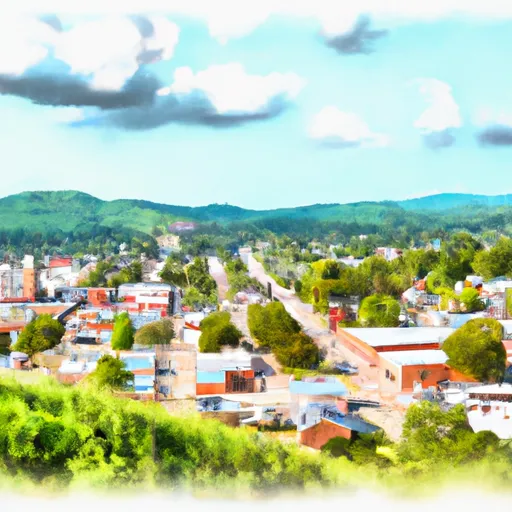-
 Snoflo Premium
Snoflo Premium
Get unlimited access to all our content
With no Ad interruptions! - Start Your Free Trial Login with existing account
Mount-Sterling
Eden Index
Climate
8.2
•
Recreation
1.7
•
Community
2.2
•
Safeguard
4.4/10

Mount Sterling is a charming city located in Montgomery County, Kentucky. Situated in the heart of the Bluegrass Region, Mount Sterling experiences a humid subtropical climate with four distinct seasons. Summers are typically hot and humid, with temperatures reaching the mid-80s to low 90s Fahrenheit. Winters are usually cool, with temperatures ranging from the mid-20s to low 40s Fahrenheit.
Hydrologically, Mount Sterling is known for its connection to the Licking River, which winds its way through the region. The river provides opportunities for fishing and boating, with species such as bass and catfish being popular catches. Additionally, the area is dotted with small creeks and streams, contributing to the local hydrology.
Outdoor enthusiasts will find plenty of recreational opportunities in Mount Sterling. The nearby Daniel Boone National Forest offers a wide range of activities, including hiking, camping, and wildlife viewing. The Red River Gorge Geological Area, located within the national forest, is renowned for its breathtaking cliffs, natural arches, and hiking trails. Additionally, there are several parks and golf courses in and around Mount Sterling, providing ample options for outdoor recreation.
What is the Eden Index?
The Snoflo Eden Index serves as a comprehensive rating system for regions, evaluating their desirability through a holistic assessment of climate health, outdoor recreation opportunities, and natural disaster risk, acknowledging the profound impact of these factors on livability and well-being.
Climate Health Indicator (CHI): 8.2
Mount-Sterling receives approximately
1175mm of rain per year,
with humidity levels near 84%
and air temperatures averaging around
13°C.
Mount-Sterling has a plant hardyness factor of
6, meaning
plants and agriculture in this region thrive during a short period during spring and early summer. Most
plants will die off during the colder winter months.
By considering the ideal temperature range, reliable water supplies, clean air, and stable seasonal rain or snowpacks, the Climate Health Indicator (CHI) underscores the significance of a healthy climate as the foundation for quality living.
A healthy climate is paramount for ensuring a high quality of life and livability in a region, fostering both physical well-being and environmental harmony. This can be characterized by ideal temperatures, reliable access to water supplies, clean air, and consistent seasonal rain or snowpacks.
Weather Forecast
Streamflow Conditions
Licking
Area Rivers
Licking
Snowpack Depths
Licking
Reservoir Storage Capacity
Licking
Groundwater Levels
Recreational Opportunity Index (ROI): 1.7
The Recreational Opportunity Index (ROI) recognizes the value of outdoor recreational options, such as parks, hiking trails, camping sites, and fishing spots, while acknowledging that climate plays a pivotal role in ensuring the comfort and consistency of these experiences.
Access to outdoor recreational opportunities, encompassing activities such as parks, hiking, camping, and fishing, is crucial for overall well-being, and the climate plays a pivotal role in enabling and enhancing these experiences, ensuring that individuals can engage in nature-based activities comfortably and consistently.
Camping Areas
| Campground | Campsites | Reservations | Toilets | Showers | Elevation |
|---|---|---|---|---|---|
| Big Ridge State Park | 50 | 1,034 ft | |||
| Indian Mountain State Park | 49 | 959 ft | |||
| Turkey Foot Rec Area | 15 | 920 ft | |||
| Anderson County Park | 72 | 1,078 ft | |||
| Levi Jackson Wilderness Road State Park | 150 | 1,164 ft | |||
| Loyston Point | 64 | 1,051 ft | |||
| S - Tree Rec Area | 20 | 1,453 ft | |||
| Norris Dam State Park | None | 1,262 ft | |||
| Clay County Campground | None | 857 ft |
Nearby Ski Areas
Catastrophe Safeguard Index (CSI):
The Catastrophe Safeguard Index (CSI) recognizes that natural disaster risk, encompassing floods, fires, hurricanes, and tornadoes, can drastically affect safety and the overall appeal of an area.
The level of natural disaster risk in a region significantly affects safety and the overall livability, with climate change amplifying these risks by potentially increasing the frequency and intensity of events like floods, fires, hurricanes, and tornadoes, thereby posing substantial challenges to community resilience and well-being.
Community Resilience Indicator (CRI): 2.2
The Community Resilience Indicator (CRI) recognizes that education, healthcare, and socioeconomics are crucial to the well-being of a region. The CRI acknowledges the profound impact of these elements on residents' overall quality of life. By evaluating educational resources, healthcare accessibility, and economic inclusivity, the index captures the essential aspects that contribute to a thriving community, fostering resident satisfaction, equity, and social cohesion.

